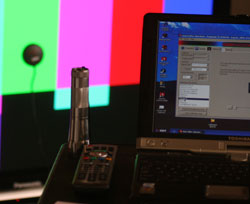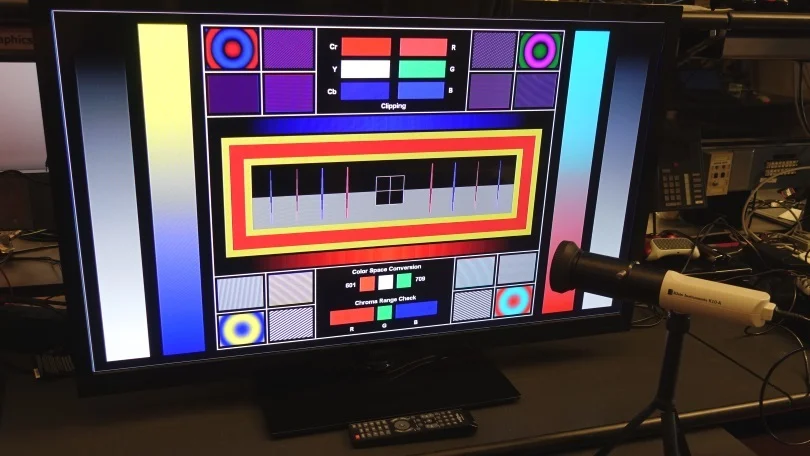In the age of advanced television technology, owning a high-definition TV is just the beginning. To truly immerse yourself in the cinematic experience or enjoy crystal-clear sports broadcasts, proper TV calibration is essential. Calibration ensures that your television displays colors accurately, contrasts are optimized, and brightness levels are adjusted to suit your viewing environment. This guide will walk you through the fundamentals of TV calibration, empowering you to enhance your viewing pleasure without needing to be a tech expert.
Introduction to TV Calibration
TV calibration is the process of adjusting various settings on your television to achieve the most accurate and pleasing picture quality possible. When you buy a new TV, it comes with factory settings that are often geared towards standing out in a store environment rather than replicating realistic colors and contrasts in your home. By calibrating your TV, you can tailor its performance to better match industry standards or personal preferences.
Why Calibrate Your TV?
- Achieve Accurate Colors: Calibrating your TV ensures that the colors displayed on screen are true to life and consistent with what the content creators intended.
- Optimize Contrast and Brightness: Proper calibration adjusts the contrast and brightness levels to prevent details from getting lost in dark or bright scenes.
- Enhance Viewing Experience: A calibrated TV provides a more immersive experience, making movies, shows, and games more enjoyable.
- Extend TV Lifespan: By setting appropriate brightness levels, you can potentially extend the lifespan of your TV screen.
- Save Energy: Calibrated TVs can consume less power because they’re not unnecessarily over-bright.
Understanding TV Calibration Tools
Before diving into the calibration process, it’s essential to familiarize yourself with the tools typically used:
- Calibration Discs/Software: These discs or software programs guide you through the calibration process step by step. They often include test patterns and color filters.
- Calibration Devices: A colorimeter or spectrophotometer is used to measure light output, color accuracy, and other parameters of your TV display. Some calibration software also uses built-in sensors on smartphones.
Steps to Calibrate Your TV
Now, let’s break down the steps involved in calibrating your TV:
1. Preparation

- Choose the Right Environment: Ensure the room lighting is consistent with your typical viewing conditions. Avoid direct sunlight or harsh artificial lighting.
- Gather Your Tools: You’ll need a calibration disc or software, a calibration device (if available), and your TV remote.
2. Basic Settings Adjustment
- Reset to Factory Defaults: Start by resetting your TV to its factory default settings to undo any previous adjustments.
- Select Picture Mode: Choose a picture mode that’s closest to the industry standard. Often, “Movie” or “Cinema” modes are good starting points.
3. Adjusting Basic Settings
- Brightness and Contrast: Set the brightness so that details in dark scenes are visible but not washed out. Adjust contrast to ensure bright scenes maintain detail without being overly bright.
- Color Temperature: Choose a color temperature setting that looks natural to your eyes. The “Warm” setting often mimics natural light conditions.
4. Fine-Tuning Settings
- Color and Tint: Use test patterns to adjust color and tint settings. Ensure skin tones and colors appear natural and not overly saturated or washed out.
- Sharpness: Avoid over-sharpening, which can introduce artifacts. Set sharpness to a level where details are clear without enhancing noise.
5. Advanced Calibration (Optional)
- Using Calibration Software: If you have a calibration device, follow the software’s instructions to measure and adjust color accuracy, gamma, and other advanced settings.
- White Balance: Adjust the TV’s white balance to eliminate any color casts. This step requires careful adjustment using test patterns and a calibration device for precision.
6. Saving Your Settings
- Store Settings: Once calibrated, save your settings to ensure they aren’t lost if your TV resets or powers off.
Conclusion
Calibrating your TV might seem daunting at first, but with the right tools and a bit of patience, you can significantly enhance your viewing experience. Whether you’re a movie enthusiast, a gamer, or simply enjoy watching TV shows, calibrated settings ensure that you’re getting the best possible picture quality your TV can offer. Take the time to experiment with different settings and enjoy the newfound clarity and vibrancy in your favorite content.
Additional Tips and Resources
- Regular Maintenance: Periodically check and recalibrate your TV settings, as factors like aging bulbs or changes in viewing environment can affect calibration.
- Professional Calibration: For those who prefer a hands-off approach, professional calibration services are available, ensuring optimal performance tailored to your specific TV model and viewing conditions.
By following this guide, you’ll not only maximize your TV’s potential but also gain a deeper appreciation for the intricate technology that brings your entertainment to life. Happy viewing!
This comprehensive guide provides a detailed walkthrough for beginners on how to calibrate their TVs effectively, ensuring optimal viewing experiences across various content types.



